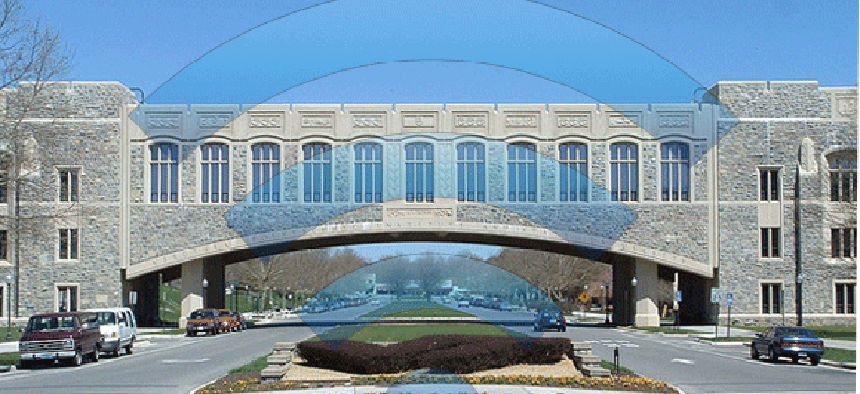The switch to IPv6 is on: Who’s out in front?


Connecting state and local government leaders
A year after the global launch, traffic using IPv6 has doubled, with some mobile networks, university campuses and government agencies driving the switch.
A year after the global launch of IPv6, traffic using the next generation of IP protocols has doubled, with some mobile networks, universities and government networks showing more than 30 percent of their traffic is IPv6.
According to measurements for May 22 from the Internet Society, Virginia Tech topped the list for IPv6 use with almost 52 percent of the school’s network traffic using the new protocols. The Navy’s Space and Naval Warfare Systems command came in second with about 43 percent.
The top 10 handlers of IPv6 traffic
But the real driver for use of IPv6 appears to be mobility, with IPv6 accounting for 31 percent IPv6 traffic on the network of Verizon Wireless, the largest U.S. mobile carrier with more than 100 million customers. At one point following the World IPv6 launch on June 6, 2012, more than one third of all IPv6 traffic over Akamai, a major content distribution network, was from Verizon Wireless.
“This can be a pretty compelling argument for reducing your reliance on IPv4,” said Leslie Daigle, the Internet Society’s chief Internet technology officer. With the growing use of mobile devices to access government networks, IPv6 traffic in the .gov domain is expected to grow quickly.
Although executive branch agencies were required to enable IPv6 for public websites by Sept. 30, 2012, the National Institute of Standards and Technology found that just 520 websites, or 42 percent of those tested, had IPv6 operational as of June 6.
SPAWAR has been an early adopter of IPv6 and the new protocols have been operational across its network since 2010. The deployment was part of a Defense Department effort to move beyond test beds to full-production networks to gain experience with the protocols. IPv6 was deployed across the Defense Research and Engineering Network, which is the service provider for SPAWAR. At the same time it was deployed throughout the SPAWAR network, which includes more than a dozen campuses.
Version 6 of the Internet Protocols was developed to replace IPv4, which has been in use since the birth of the public Internet, because available IPv4 Internet addresses are rapidly being used up. Future growth in Internet use will have to occur with IPv6, which has an exponentially larger number of addresses available.
The IPv6 world launch was intended to spur adoption of the new protocols, with major Internet content and service providers pledging to enable their use by default. More than 2,600 websites participated in World IPv6 launch, including 138 U.S. government domains.
The two versions of the protocols are not interoperable. Because IPv4 remains the dominant protocol, adopting IPv6 on a network currently means essentially operating and maintaining two networks. How long this will last is still something of a guessing game, Daigle said.
The percent of IPv6 traffic over the Internet varies greatly with time, geographic location and addresses being accessed, but generally remains in the single digits. Google, one of the Internet’s major destinations, reported 1.28 percent of its traffic was IPv6 as of June 5. But with volumes steadily doubling year to year, “we’re not going to be staying in the small numbers long,” Daigle said. She said one third of the networks participating in the launch now are showing more than more than 10 percent IPv6 traffic.
Daigle estimated that IPv6 could top 50 percent of Internet traffic as early as 2019. “It’s no longer a question of ‘if’ IPv6 will be deployed,” she said. “It’s no longer theoretical. IPv4 will be around as long as IPv4 is necessary,” but at some point it will become too expensive to maintain separate networks and IPv4 will be turned off and networks will employ coping mechanisms for dealing with the legacy traffic.
It is not surprising that much of the growth in the new protocols is coming in the wireless area. The proliferation and frequent updating of devices and the tighter integration of carrier network and endpoint devices makes the large number of IPv6 addresses attractive for rapidly expanding infrastructures.
“That’s the nature of the mobile world,” Daigle said. This also holds true for university networks, where students show up each year with relatively new, often wireless devices.
By contrast, traditional wireline carriers such as Time Warner Cable and Comcast remain in the single digits for IPv6 traffic. “People have creaky old boxes that are their home gateways,” many of which use IPv4 by default and are not as frequently updated, Daigle said.
Verizon Wireless committed to IPv6 with the launch of its 4G LTE network in late 2010 when IPv6-enabled content still was rare, recognizing that it soon would be a necessity rather than an option in order to support accelerated growth of mobile connectivity. World IPv6 Day in June 2011, a global stress test for IPv6 networks, was the first real test of the new infrastructure. It revealed issues with peering, networks and devices in the Verizon Wireless network that the carrier spent the next eight months resolving in anticipation of 2012’s World IPv6 Launch.
Verizon Wireless said that IPv6 accounted for 7.36 percent of traffic over its network on June 8, 2012, and that more than doubled to 16.6 percent by August.




